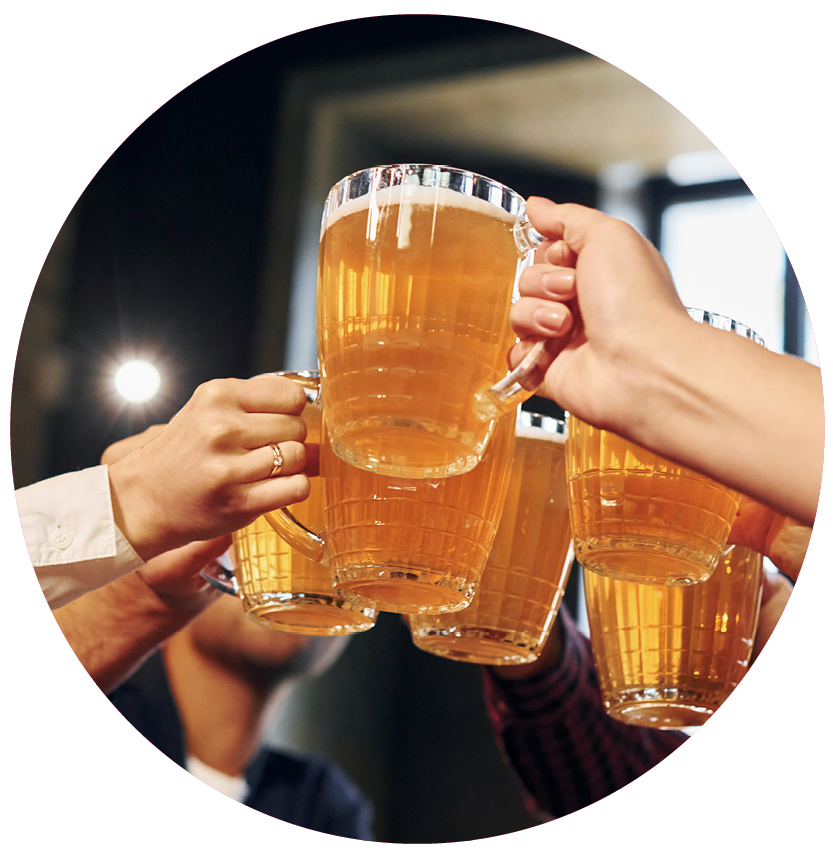
When we think of the perfect on-premise occasion, it’s hard to imagine it without a frosty pint of beer in hand. Whether it be that first refreshing sip of the holiday or the exuberant cheers shared with fellow fans as your team scores at the local sports bar, beer has long been the heartbeat of human connection. If it’s a casual gathering or a special celebration, there’s something undeniably magical about clinking glasses and sharing stories over a cold brew.
How 2024 Marks a Comeback for Beer
After a decade of losing share in the on premise to spirits, 2024 has been the year that beer has really begun to bounce back. CGA by NIQ’s latest On Premise Measurement numbers tell us that beer currently has the strongest volume and value trend across beer, wine and spirits. Beer sales now account for 86% of total beverage alcohol volume in the channel, but the real interesting insight comes when we go beyond the headline figures.
Unpacking the Beer Landscape
At NIQ, we can take a closer look at the beer category and its vibrant segments. Craft and domestic premium beers lead the charge, each capturing 29% of all spending within the category. However, it’s the import segment that’s truly driving growth, with sales up by 0.3% compared to last year.
What makes imports so appealing? They provide a potential upgrade for consumers seeking something special, all without the hefty price tag or high ABV often associated with craft beer. This expansive segment includes all beers brewed outside the U.S., giving operators a fantastic opportunity to refresh their menus with exciting options. For consumers, this means access to unique flavors and styles that enhance their drinking experience.
 Mexico and Ireland Lead the Charge
Mexico and Ireland Lead the Charge
When it comes to the import beer market, two countries are making waves and driving impressive growth: Mexico and Ireland.
Mexican beer has been on a remarkable upward trajectory for years, with sales rising by 1.2% over the past year. Dominating the import category, it raked in a staggering $6.8 billion in sales, solidifying its position as a fan favorite among beer enthusiasts.
The largely one-brand category of Irish beer is currently experiencing a real purple patch both in the US and abroad. Irish beer is the fastest growing import, with dollar sales up +9.2% versus a year ago. Strong marketing, a big push on draft quality, and an effort to bring in younger drinkers have all had a positive impact.
Draft vs. Packaged
As we shift our focus from categories to formats, the age-old debate rages on: draft or packaged? Currently, it’s a near tie, with packaged beer slightly ahead at 51% of dollar sales compared to 49% for draft. However, the tides are turning, and draft is showcasing stronger performance overall. In drinking outlets, draft beer sales have surged by 4%, while packaged beer has dipped by 2%.
The rise of ready-to-drink (RTD) beverages and hard seltzers has intensified competition in the fridge, making it crucial for brewers to innovate across both formats.
 The Rise of Non-Alcoholic Options
The Rise of Non-Alcoholic Options
In the ever-evolving beer landscape, few shifts are as significant as the surge in the non-alcoholic category. Currently valued at $740 million in the off-premise, the non-alc market is predominantly driven by beer, which accounts for an impressive 85% of all sales.
This trend is mirrored in bars and restaurants, where non-alcoholic beer, while still a small player with just a 0.5% share of total beer, is experiencing explosive growth—up a remarkable 33.5% compared to last year. With 37% of consumers expressing a desire to drink less alcohol this year, the demand for enjoyable non-alcoholic options is more crucial than ever.
For venues looking to attract this mindful crowd, offering a robust non-alcohol selection isn’t just an option, it’s a necessity.
Wrapping Up
As we navigate the dynamic world of beer in 2024, it’s clear that this beloved beverage has plenty of opportunity for further growth. Challenges remain with competition intensifying, meaning brewers and venues alike must innovate across all formats to capture the hearts and minds of a diverse clientele. In this evolving scene, beer remains a powerful connector, adapting to meet the desires of modern drinkers while celebrating the rich traditions that make it a timeless favorite.
Cheers to the future of beer!
Originally published in Bar and Restaurant news




